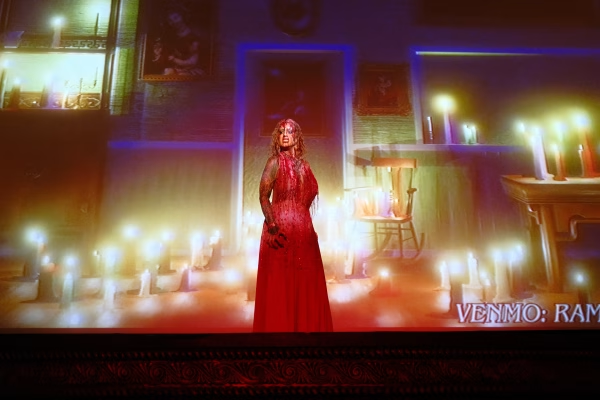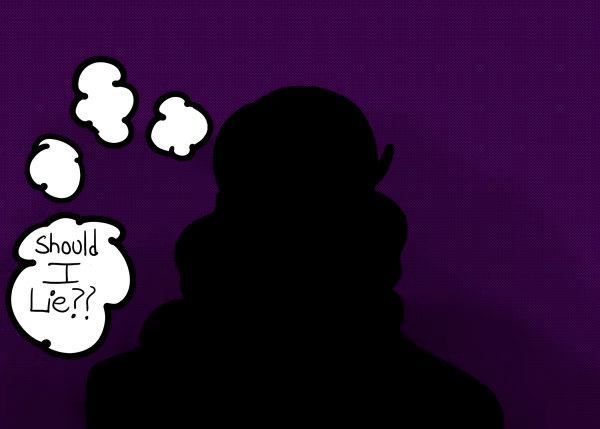OPINION: Newsrooms need to reimagine objectivity
Senior guard Lexi Held jumping for a shot in DePaul’s 101-64 win over Butler on Dec. 3.
The objectivity discourse has found home in journalism classrooms nationwide. Journalism students learn about how objectivity and neutrality are key traits in the industry. I’ve had this talk plenty of times in my classrooms; however, this discussion always neglects the implications of racial and ethnic identity.
The Society of Professional Journalists outline in their code of ethics that all journalists should, “boldly tell the story of the diversity and magnitude of the human experience [and] seek sources whose voices we seldom hear.”
Predominantly white newsrooms and institutions impact the range of who and what gets covered, and how. We don’t discuss implicit racial biases in news coverage for white journalists, nor do we tend to question the objectivity of white journalists covering white people.
“We would never say that a white reporter couldn’t cover a story about white people,” said Jordan Stalker, an adjunct professor in DePaul’s College of Communication. “We wouldn’t say that.”
In the past, the industry viewed identity as a conflict of objectivity which discouraged journalists of color to report on their own communities.
Despite this old-school notion, several DePaul student journalists of color view things differently. Sophomore and 14 East associate editor Eiman Navaid said that her identity aligning with her coverage makes sense.
“From what I’ve seen, [journalists of color] are seen as being ‘too emotional’ to cover stories that directly affect their community,” Navaid said. “However, this can actually amplify the coverage as they are more in tune with their communities as opposed to a white journalist who simply comes in for a story.”
Objectivity gets enforced by preventing journalists of color from reporting on their own communities, while also lending leverage to white journalists as well.
“From what I’ve seen, [objectivity] has mainly only applied to journalists of color to prevent them from ‘telling the full truth’ on issues that affect their community and people of their identity,” Navaid said. “On the other hand, objectivity applies to white journalists to ensure [or] back up their reasoning for explaining ‘both sides.’”
Media has played a role in promoting and transmitting harmful messages about people of color. This past mistreatment affects the relationship between people of color and the media, which makes communities hesitant to trust white reporters.
“That’s a very human response,” Stalker said. “I think that that combined with the very well documented elements of oppression and mistrust and prejudice that communities of color or minority communities have undergone and experienced, leads them to not trust those who are part of a predominantly white institution like journalism.”
As a journalist of color myself, I want my community to have coverage that goes beyond what crimes and drug busts have occurred.
This also occurs for Western media reporting on international issues. For DePaul senior and aspiring international reporter Fatima Zaidi, Western and white media perpetuates harmful ideologies of the Middle East.
“No white man or woman in this case is going to tell the Western world about [these issues] … so this is where I think the voices of journalists of color really do come into play,” Zaidi said.
Zaidi referred to publications and white reporters promoting the correlation of Islam and terrorism that highlights racial bias.
“Do you think that white people who agreed with those statements should be the ones telling our narrative?” Zaidi said. “Take it a step further, those who have never experienced any form of racial justice by the judicial system in the United States? Should they be the ones telling our narrative about what racism is and what racism is not?”
Journalists and the industry can examine this trope as racist because it implies that journalists of color can’t be objective due to their identity. This is because we generalize all journalists of color as biased due to their racial or ethnic identity while attributing individualism to each white reporter.
“I think the biggest implication that [objectivity] conveys is that you’re not fit enough to do what you have the talents to do,” Zaidi said.
Even for diverse newsrooms, there is still a huge lack of people of color on editorial staffs. The Pew Research Center reported that 77 percent of newsroom employees are non-Hispanic white. Journalists of color are then left out of making important decisions in the newsroom. Newsrooms have to make a better effort to recruit and hire people of color while also assigning them meaningful roles.
The journalism industry needs to reexamine how objectivity gets enforced and to whom. This has to start with diversifying newsrooms. Although the public has been diversifying, the industry is still behind.
“If you look at the people who are doing the hiring, they are mostly white,” Stalker said. “If you look at people who are doing the training of journalists in universities, we are still mostly white. That seems to attract certain kinds of people and sometimes can discourage certain types of people.”
The journalism industry needs to reexamine how objectivity gets enforced and to whom. This has to start with diversifying newsrooms. Although the public has been diversifying, the industry is still behind.







